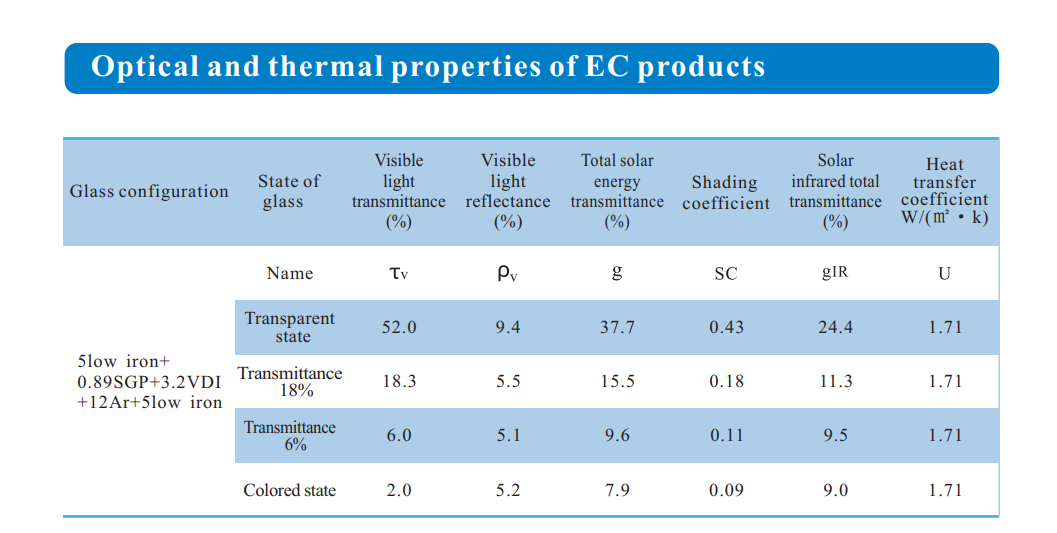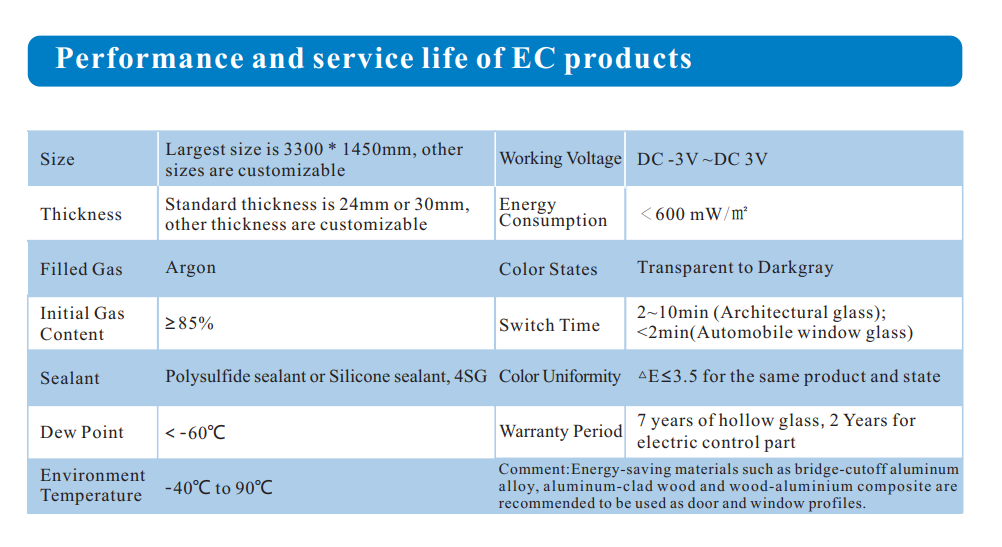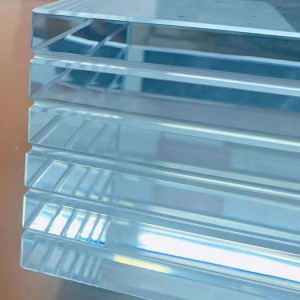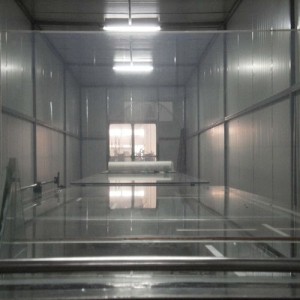Electrochromic Glass
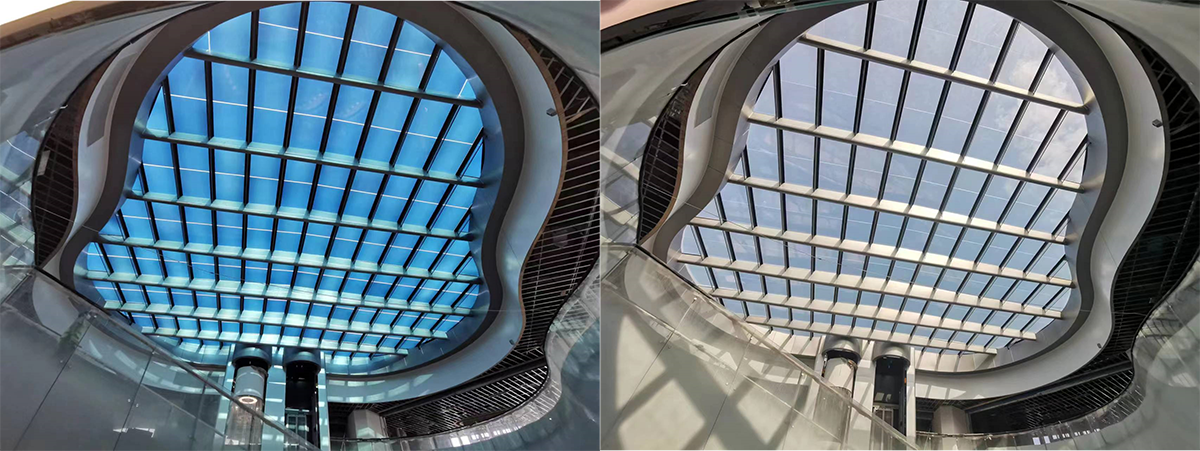
1. What is Electrochromic glass
Electrochromic glass (a.k.a. smart glass or dynamic glass) is an electronically tintable glass used for windows, skylights, facades, and curtain walls. Electrochromic glass, which can be directly controlled by building occupants, is famous for improving occupant comfort, maximizing access to daylight and outdoor views, reducing energy costs, and providing architects with more design freedom.
2. EC glass Benefits and Features
Electrochromic glass is an intelligent solution for buildings in which solar control is a challenge, including classroom settings, healthcare facilities, commercial offices, retail spaces, museums, and cultural institutions. Interior spaces featuring an atrium or skylights also benefit from smart glass. Yongyu Glass has completed several installations to provide solar control in these sectors, protecting occupants from heat and glare. Electrochromic glass maintains access to daylight and outdoor views, linked to faster learning and patient recovery rates, improved emotional wellness, increased productivity, and reduced employee absenteeism.
Electrochromic glass offers a variety of control options. With Yongyu Glass’ advanced proprietary algorithms, users can operate automatic control settings to manage light, glare, energy use, and color rendering. The controls can also be integrated into an existing building automation system. For users who desire more control, it can be manually overridden using a wall panel, allowing the user to alter the tint of the glass. Users can also change the tint level via the mobile app.
In addition, we help building owners achieve their sustainability goals through energy conservation. By maximizing solar energy and minimizing heat and glare, building owners can achieve cost savings over the building’s life cycle by reducing overall energy loads by 20 percent and peak energy demand by up to 26 percent. However, not only do building owners and occupants benefit – but architects are also given the freedom to design without the need for blinds and other shading devices that clutter the exterior of the building.
3. How Does Electrochromic Glazing Work?
The electrochromic coating consists of five layers more petite than a 50th of the thickness of a single human hair. After applying the coatings, it is manufactured into industry-standard insulating glass units (IGUs), which can be installed into frames supplied by the company’s window, skylight, and curtain wall partners or by the client’s preferred glazing supplier.
The tint of electrochromic glass is controlled by the voltage applied to the glass. Applying a low electricity voltage darkens the coating as lithium ions and electrons transfer from one electrochromic layer to another. Removing voltage, and reversing its polarity, causes the ions and electrons to return to their original layers, causing the glass to lighten and return to its clear state.
The five layers of electrochromic coating include two transparent conductors (TC) layers; one electrochromic (EC) layer sandwiched between the two TC layers; the ion conductor (IC); and the counter electrode (CE). Applying a positive voltage to the transparent conductor in contact with the counter electrode causes lithium ions to be
Driven across the ion conductor and inserted into the electrochromic layer. Simultaneously, a charge-compensating electron is extracted from the counter electrode, flows around the external circuit, and is inserted into the electrochromic layer.
Due to electrochromic glass’ reliance on low-voltage electricity, it takes less electricity to operate 2,000 square feet of EC glass than to power a single 60-watt light bulb. Maximizing daylight through the strategic use of smart glass can reduce a building’s reliance on artificial lighting.
4. Technical data
